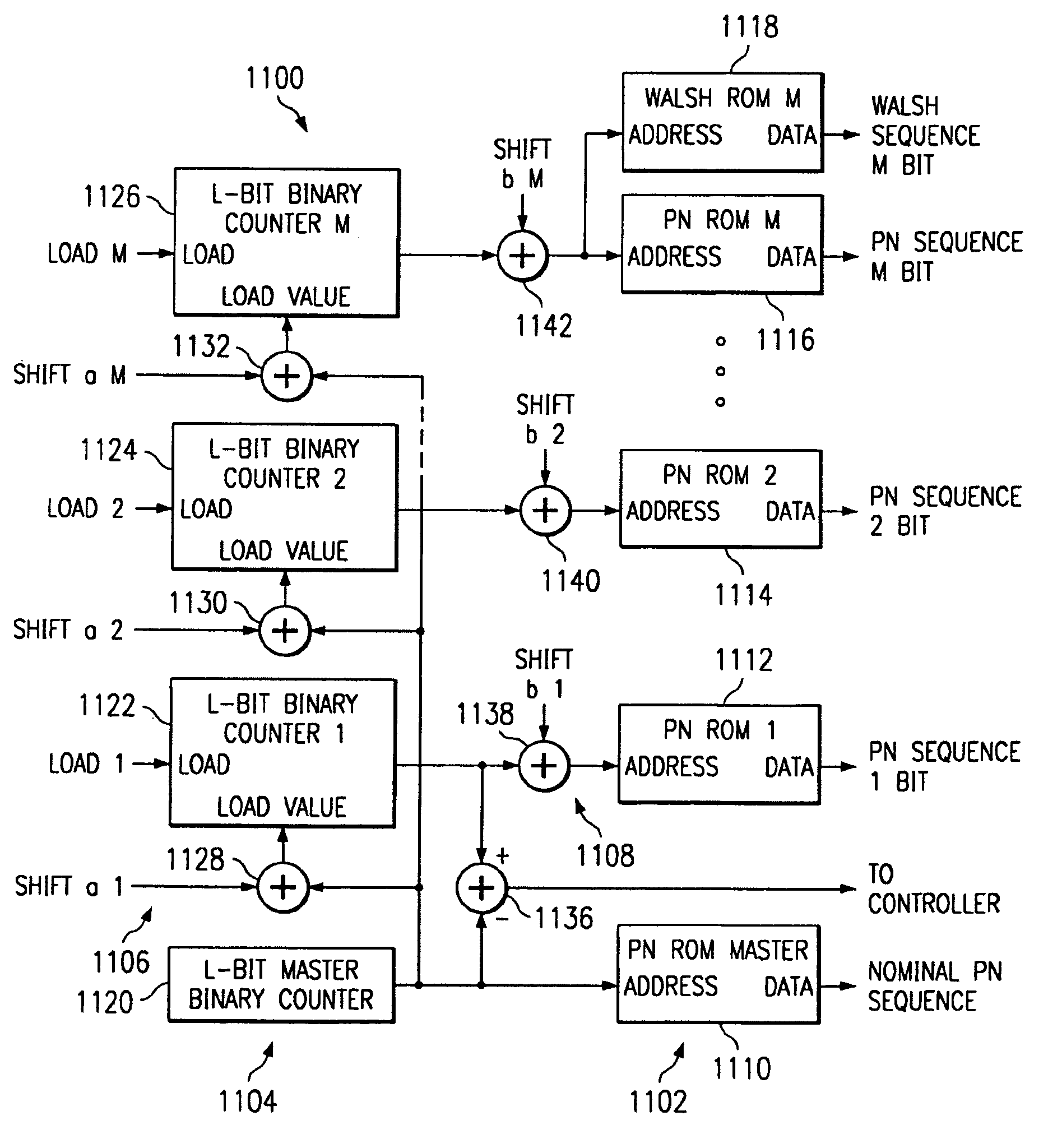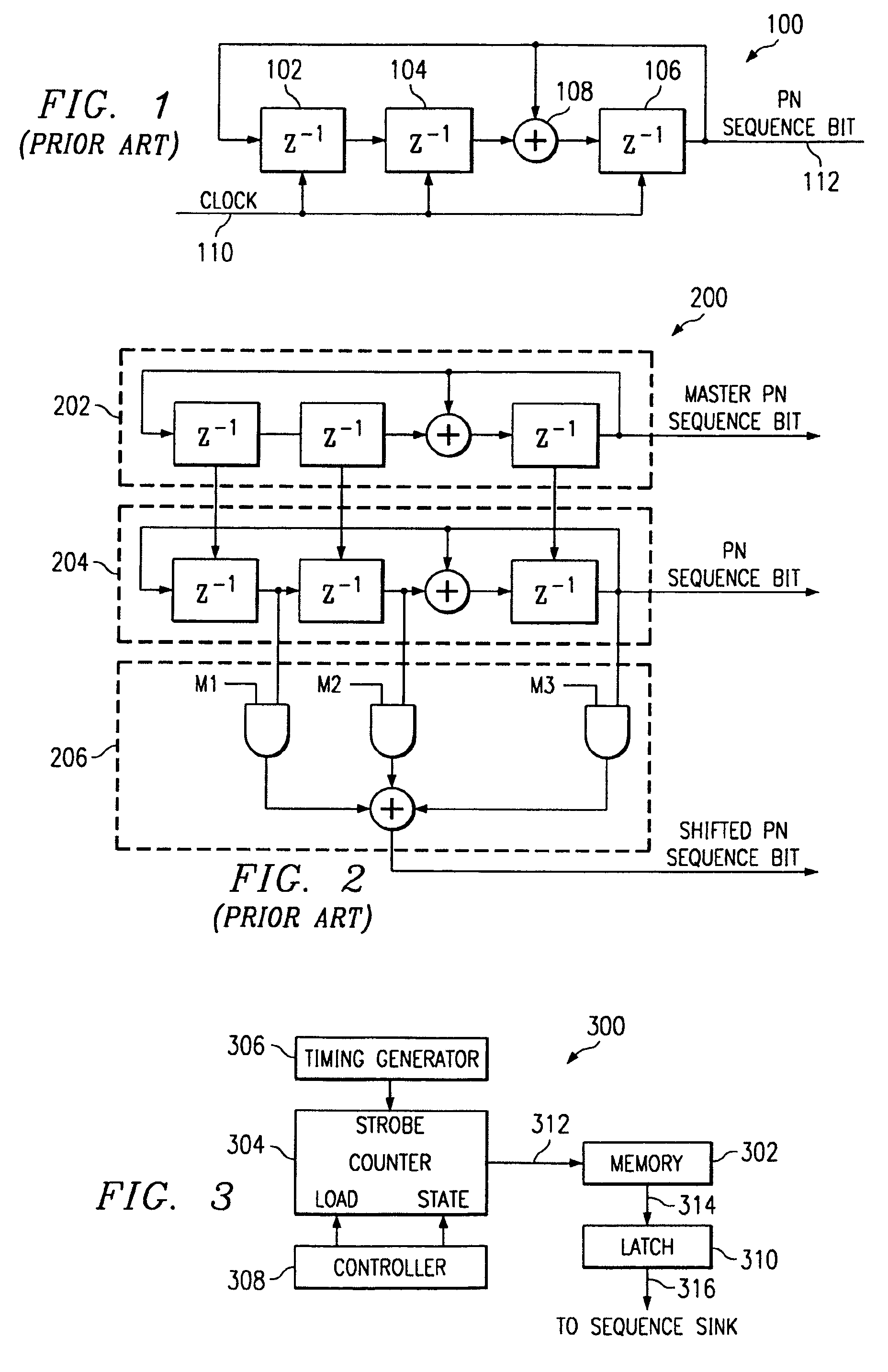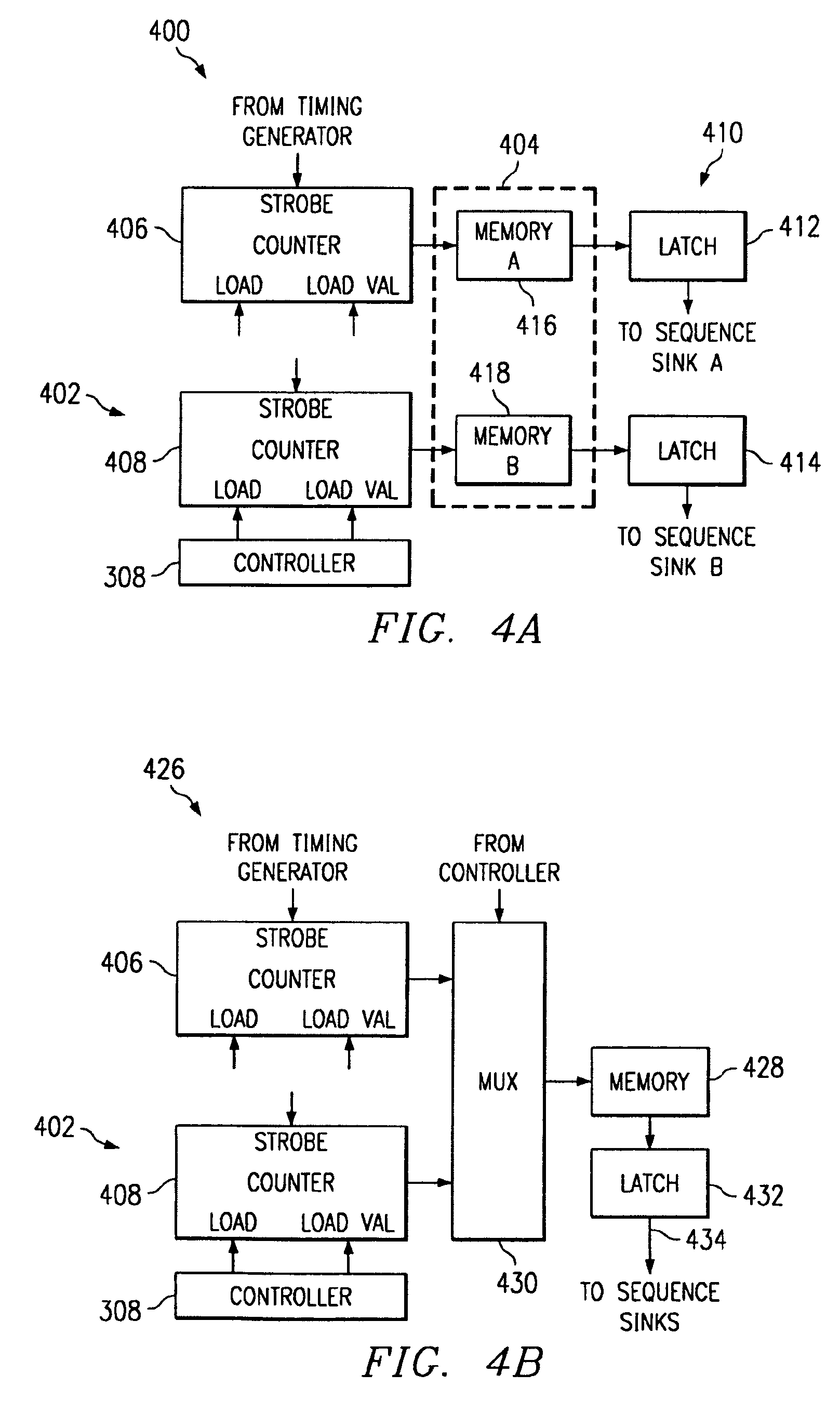Method of and apparatus for controlling system timing with use of a master timer
a master timer and system timing technology, applied in the field of communication, can solve the problems of inability to control the timing of the system, and inability to achieve the desired shift, etc., and achieve the effect of reducing the cost of generating the pn sequence shi
- Summary
- Abstract
- Description
- Claims
- Application Information
AI Technical Summary
Benefits of technology
Problems solved by technology
Method used
Image
Examples
Embodiment Construction
[0058]As one of the many inventive methods and devices described herein, A method of generating one or more data sequences for spread spectrum communications includes the steps of
[0059]providing data at an input of a memory which stores bits associated with a pseudorandom noise (PN) sequence; changing the data; and for each of a plurality of changes of the data, providing a selected PN bit of the PN sequence at an output of said memory based on the data.
[0060]FIGS. 3 and 4A–E are schematic block diagrams of data sequence generators. Although a number of such generators are shown and described, they are by no means exhaustive as one skilled in the art will understand. FIG. 3 is a schematic block diagram of a data sequence generator 300. Data sequence generator 300 includes a memory 302, a counter 304, a timing generator 306, a controller 308 and a latch 310. Memory 302 has a data sequence stored therein. Counter 304 has an output coupled to an address input of memory 302 designated b...
PUM
 Login to View More
Login to View More Abstract
Description
Claims
Application Information
 Login to View More
Login to View More - R&D
- Intellectual Property
- Life Sciences
- Materials
- Tech Scout
- Unparalleled Data Quality
- Higher Quality Content
- 60% Fewer Hallucinations
Browse by: Latest US Patents, China's latest patents, Technical Efficacy Thesaurus, Application Domain, Technology Topic, Popular Technical Reports.
© 2025 PatSnap. All rights reserved.Legal|Privacy policy|Modern Slavery Act Transparency Statement|Sitemap|About US| Contact US: help@patsnap.com



